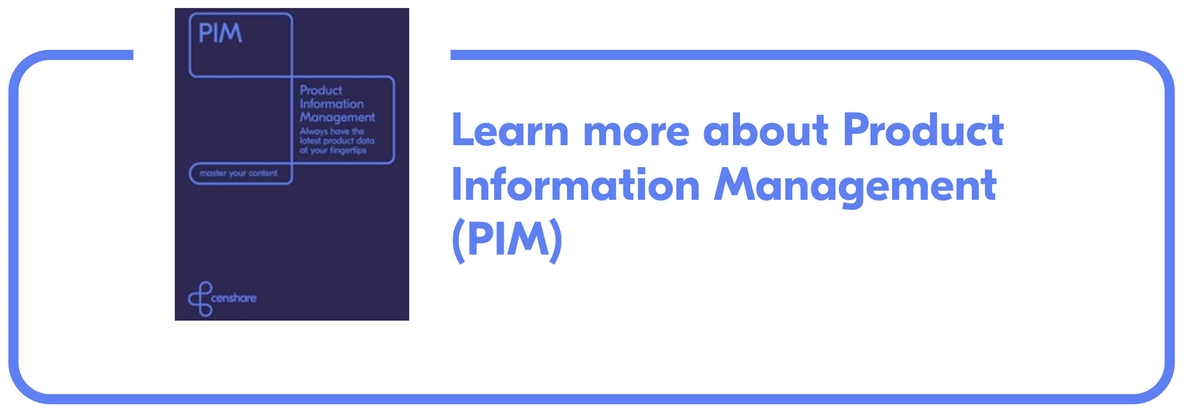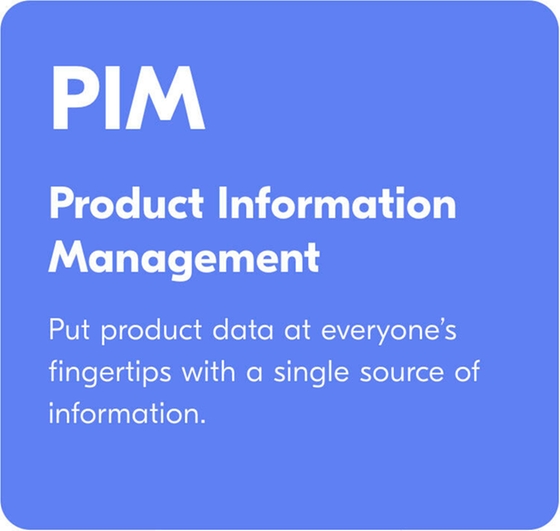
Future-proofing your DAM selection
Event location - Online


Want your ecommerce efforts to effectively engage customers in an era where experience is no longer just a trend? Meet PXM - a solution that is revolutionizing how businesses engage with customers.
Stay with us, and you will know how Product Experience Management (PXM) differs from traditional PIM, what are PXM benefits and challenges, and strategies for success.
Let's explore our guide and understand the power of personalized customer engagement through comprehensive PXM insights.
Product Experience Management - PXM - is the practice of orchestrating and optimizing all customer interactions with a product. It involves creating a cohesive and engaging product experience across all touchpoints. In other words, PXM's role is to manage the entire experience around it.
Product experience management (PXM) has become essential to deliver exceptional customer experiences across all touchpoints, marketplaces, or channels and enhance sales. PXM focuses on presenting the best product through compelling product content and information, ensuring not just a transaction but a memorable buying experience.
Also, PXM goes beyond consistent product information management (PIM) to create a holistic omnichannel experience that drives customer satisfaction and loyalty. Thanks to enriching product data and ensuring reliable content, PXM enhances the customer journey and influences purchase decisions, helping customers find the relevant product they need while fostering loyalty through a captivating shopping journey.
In a multichannel world where the quality of product management directly impacts brand perception, PXM stands as a powerful tool to build loyalty, drive conversions, and shape an exceptional buying experience.
While both PIM and PXM deal with product data and content, their focus and scope differ.
Like you see, PXM matters because the modern customer expects an exceptional shopping experience that goes beyond mere data. Its ability to harmonize data with emotive content ensures a seamless and delightful journey across every channel, ultimately translating into increased sales and lasting customer loyalty.

PXM plays a big role in enhancing customer engagement and satisfaction - that's already obvious.
This type of management ensures that customers not only interact with the product but engage with it, creating a connection that goes beyond mere consumption.
Imagine this in this way: It's all about creating a relationship between the product and the customer, a relationship that resonates with trust, satisfaction, and loyalty. It's the bridge that connects the product to the customer's emotions, needs, and aspirations.
And what are the specific benefits of PXM? We have several of them!

The platform can be flexibly integrated into an existing MarTech stack and is open for all content types, data models, contributors and channels. Deliver to any channel though headless CMS, APIs and flexible connectors.
Before diving into strategies for PXM, we need to understand the challenges it brings. For example:
But don't worry - these challenges can be overcome with the right tool and strategy. We will show you them in a second!
Time for the icing on the cake. We bring you our 7-step strategy to deliver the best experience to your customers using PXM.
Select the appropriate tool for assistance.
The days of doing everything by hand are gone, so instead of agonizing over the manual processes, embrace technology. Look for comprehensive PXM software that aligns with your goals and offers features such as content management, data integration, analytics, and automation.
There are various tools and strategies that can enhance the omnichannel product experience, and choosing PXM software can prove a big help.
For example, they enable businesses to:
Consider factors like integration, scalability, and user-friendliness. And many tools offer a free trial, so if you have a chance, don't be afraid to use it.
Ensure that teams are well-trained in utilizing PXM tools. Every player must know their role and how to play it to perfection. Therefore, equip them with a deep understanding of the chosen PXM tools and the strategy's goals. This empowers product teams to leverage the tools effectively, ensuring a consistent and impactful product experience.
Next, develop a comprehensive content plan. Define your brand voice, messaging, and narrative style. Tailor your content to different customer segments and stages of the journey, delivering relevant and resonant messaging.
Also, improve your PXM strategy for consistency in different channels. Check if your messaging, branding, and product information are cohesive across all touchpoints, providing a seamless experience regardless of the channel.
Prioritize data quality and enrichment. Regularly audit and update your product data, enriching it with relevant attributes, images, and descriptions. Clean and structured data contributes to a richer and more informative product experience.
Further, use customer feedback to continuously improve the product experience. Actively listen to customer opinions, preferences, and pain points. This information can shape your content, messaging, and overall approach, aligning your strategy with customer needs.
And, of course, keep track of performance and make necessary adjustments. Analyze engagement metrics, conversion rates, and customer interactions. Regularly update your strategy based on these insights to keep it fresh, relevant, and in line with changing customer expectations.
Implementing an effective PXM strategy involves utilizing the right software to centralize and manage product data, creating a platform for product excellence.
That's where censhare can help you.

censhare is a management platform that provides solutions for:
It offers a comprehensive suite of tools designed to help businesses efficiently create, manage, and distribute digital assets, content, and product information across various channels and touchpoints.
 |  |  |
censhare's platform integrates features for content management, digital asset management, collaboration, automation, and more. It enables organizations to streamline their content creation and distribution processes, maintain brand consistency, and deliver engaging customer experiences across multiple platforms, including websites, social media, print, and other digital channels.
In the context of Product Experience Management (PXM), censhare's platform can be instrumental in optimizing the management and presentation of product data and content, enhancing the overall customer journey, and driving more sales.
This platform will give you control and will relieve your team of excess work.
As you see, Product Experience Management is not just an empty word - it's a strategic approach that can transform customer engagement and drive business success.
Therefore, embrace PXM, and let it be the conductor that orchestrates a symphony of satisfaction, trust, and loyalty.
Take advantage of censhare and see how this tool can improve client experience!
Product Experience Management (PXM) is the strategic practice of managing and optimizing every interaction a customer has with a product. Its aim is to create a cohesive and engaging experience that resonates with the customer's needs, emotions, and aspirations.
PXM enhances customer engagement by creating a unified brand experience, personalizing interactions, providing accurate product information, and simplifying navigation. It can be compared to a personalized guide that leads customers through a satisfying and memorable journey.
